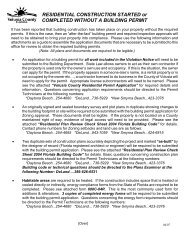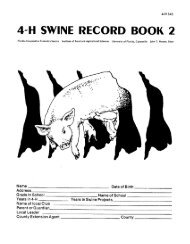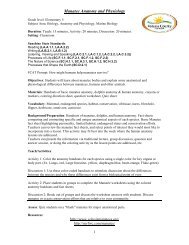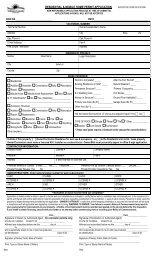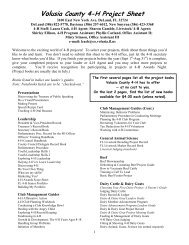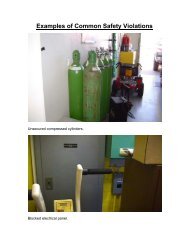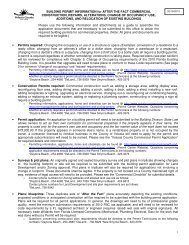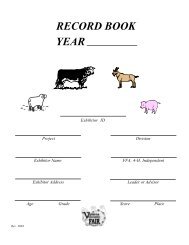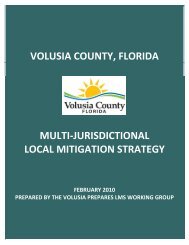Frequently asked questions - Volusia County Government
Frequently asked questions - Volusia County Government
Frequently asked questions - Volusia County Government
You also want an ePaper? Increase the reach of your titles
YUMPU automatically turns print PDFs into web optimized ePapers that Google loves.
Q. What is a protected tree?A. For commercial construction, essentially all trees 6” DBH and larger are protected. Forresidential construction, all trees 6” DBH and larger are protected within the setback areas,which are around the perimeter of the lot and are listed in the <strong>Volusia</strong> <strong>County</strong> Zoning Ordinance.Historic trees are also protected in the buildable area of the lot, which is the center portion of thelot not included in the required zoning setback areas. To determine your building setbacks,please contact the Zoning office at 386-943-7059. Specific nuisance trees are not protectedregardless of size, zoning, or location.Q. Are pine trees and palm trees protected?A. Yes. Pine trees and palm trees 6” DBH or larger are protected.Q. Does <strong>Volusia</strong> <strong>County</strong> have a minimum tree requirement?A. Yes. At least one tree must be provided for each 2,500 square feet of lot area. This mayinclude existing trees that are retained and properly protected and/or new trees that are plantedon site. For lots without trees or without enough trees, trees need to be planted to meet thisminimum requirement.Q. What trees are acceptable to meet minimum standards and/or replacement?A. Trees planted must meet the requirements for Florida Number 1 or better grade as defined bythe Grades and Standards for Nursery Plants, State of Florida, Florida Department of Agricultureand Consumer Services. Trees must be a minimum of 2” caliper in diameter and a minimum of6 feet in height. For a list of acceptable tree species, click here.Q. How do I figure out the replacement value for protected trees that were removed?A. Replacement is calculated at 15% of the cross sectional square inches of most trees removed(but 7% for sand pines). To determine cross sectional area, click here. To determine how manytrees you may need to plant to meet your replacement requirements, use this table.Existing trees not specifically protected by the ordinance may be used as replacement credit.For residential projects, this could include trees less than 6” DBH but larger than 2” caliperlocated within setback areas and trees larger than 2” caliper within buildable areas. Forcommercial projects, this could include trees less than 6” DBH but larger than 2” caliper locatedanywhere on site.Trees to be used for replacement credit must be in good condition, must be viable and healthy,and must have been adequately protected during construction. Determination of acceptability ofthe trees for replacement credit will be at the discretion of Environmental Permitting.Q. Am I required to maintain the trees that count towards minimum standards and/orreplacement?A. Yes. The property owner is responsible for the maintenance and health of all existing andplanted trees that are used for replacement and/or to meet minimum standards for a minimum oftwo years. If any of those trees die or are removed from the property within the two-yeartimeframe, then they must be replaced within 60 days with a new two-year timeframe startingfrom the date of the new planting.



